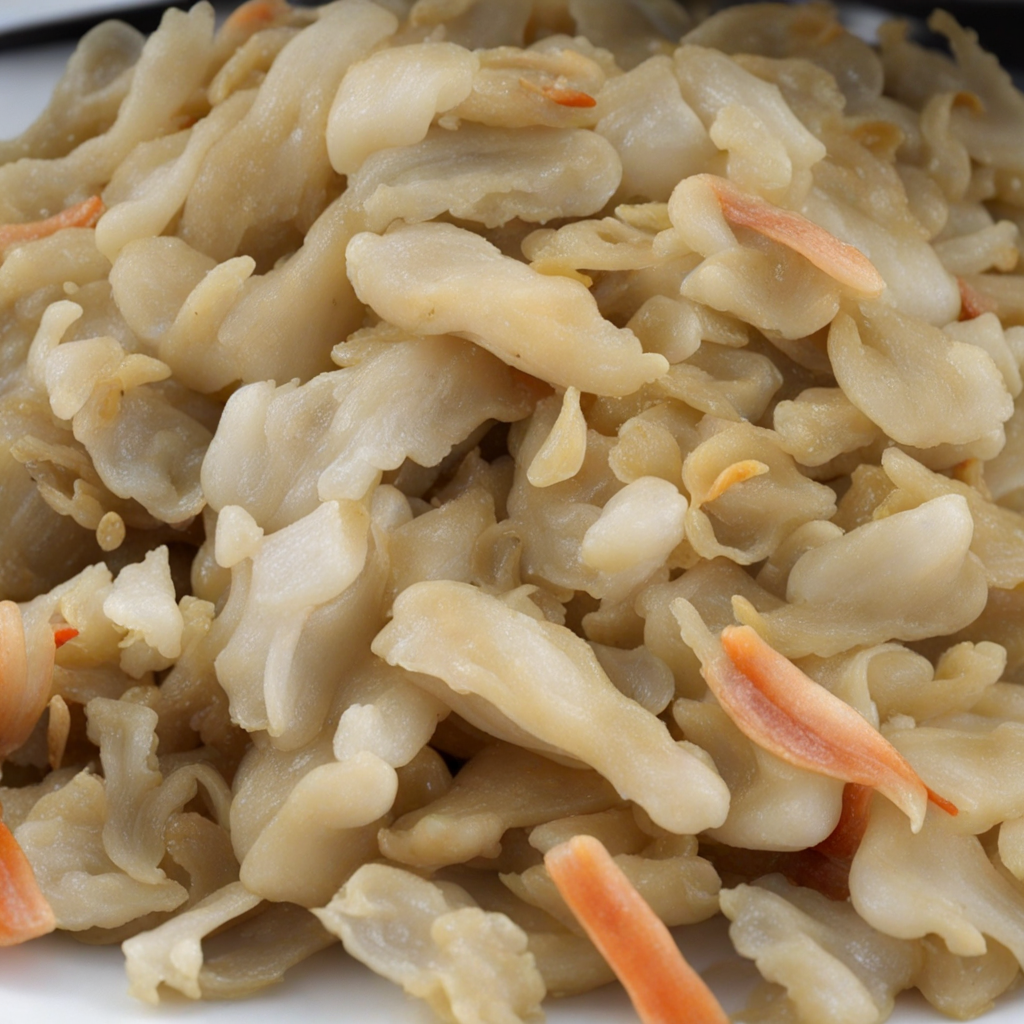Saltfish
Saltfish, also known as salted cod, is a beloved staple in the culinary heritage of Antigua and Barbuda, embodying the islands’ rich history and vibrant culture. The process of salting and drying the fish not only preserves it but also infuses it with a distinct flavor that is both savory and slightly briny. When prepared, saltfish takes on a firm yet flaky texture, making it a versatile ingredient that can be incorporated into a variety of dishes. Its robust taste pairs beautifully with a range of ingredients, allowing for endless culinary creativity. One of the most popular ways to enjoy saltfish in Antigua and Barbuda is in a traditional dish called "saltfish and fungi," which consists of seasoned sautéed saltfish served alongside a polenta-like cornmeal dish. The saltfish is typically cooked with onions, bell peppers, tomatoes, and spices, creating a delightful medley of flavors that complements the creamy fungi. This dish captures the essence of island life, marrying the savory notes of the fish with the comforting texture of the fungi, often enjoyed during breakfast or as a hearty lunch. In addition to saltfish and fungi, the ingredient can be used in various other local dishes, such as saltfish fritters and saltfish cakes. The fritters are made by mixing shredded saltfish with flour, herbs, and spices, then deep-frying them to golden perfection. These bites are crispy on the outside and flavorful on the inside, making them a popular choice for appetizers or snacks. Saltfish's adaptability makes it a cornerstone of Antiguan and Barbudan cuisine, inviting food lovers to explore its unique taste and the stories woven into every dish.
How It Became This Dish
Origins of Saltfish Saltfish, particularly in Antigua and Barbuda, has its roots deeply embedded in the Caribbean's colonial past. The practice of salting and drying fish dates back to ancient civilizations, but it gained significant popularity in the Caribbean during the 17th century. European colonizers relied heavily on saltfish as a preserved food source that could endure long voyages across the Atlantic. The fish, primarily cod, was salted to prevent spoilage, allowing sailors and settlers to have sustenance during their travels and settlements in the New World. The fishing industry in Antigua and Barbuda evolved as communities recognized the value of preserving fish through salting. Local fishermen began to develop techniques that suited their environment and available resources. The island's proximity to the ocean made it an ideal location for fishing, and the abundance of various fish species, such as snapper and mackerel, contributed to the development of saltfish as a staple food. \n Cultural Significance Saltfish transcended mere sustenance and became a cultural emblem of life in Antigua and Barbuda. It is often associated with traditional dishes that showcase the islands' culinary heritage. One of the most beloved preparations of saltfish is “Saltfish and Fungi,” a dish that combines the salted fish with a cornmeal-based accompaniment, similar to polenta. This dish, deeply rooted in local customs, is often prepared for Sunday meals or festive occasions, symbolizing familial gatherings and community bonding. In addition to its culinary importance, saltfish played a role in the economic fabric of the islands. During the colonial period, the trade of salted fish became integral to local economies. Fishermen would sell their catch to merchants, and the preserved fish would be exported to other regions, creating a source of income for families. Today, the dish remains a staple on the islands, featuring prominently in restaurants and homes alike, and it is a testament to the enduring influence of colonial practices on contemporary Caribbean culture. \n Development Over Time As Antigua and Barbuda moved into the 20th century, the preparation and consumption of saltfish continued to evolve. The introduction of modern culinary techniques and global influences led to the incorporation of saltfish into a variety of dishes beyond the traditional preparations. This adaptability reflects the dynamic nature of Caribbean cuisine, which is renowned for its fusion of flavors and ingredients. With the rise of tourism in the latter half of the century, saltfish found its way onto international menus, attracting visitors eager to experience authentic Caribbean flavors. Local chefs began to experiment with saltfish in ways that highlighted the islands' fresh produce and spices. Innovative dishes emerged, such as saltfish fritters and saltfish accra, which are deep-fried snacks enjoyed as appetizers or street food. These adaptations demonstrate how saltfish has maintained relevance in a changing culinary landscape while still honoring its historical roots. \n Saltfish in Contemporary Cuisine In contemporary Antiguan and Barbudan cuisine, saltfish continues to be a beloved ingredient. It is not only a staple in everyday meals but also a highlight during special occasions and festivals. The annual Antigua and Barbuda Food and Drink Festival celebrates local gastronomy, and saltfish often takes center stage in various forms. Chefs and home cooks alike showcase their creativity, presenting saltfish in diverse preparations that reflect both tradition and innovation. Moreover, the influence of globalization has led to a renewed interest in saltfish, with the Caribbean diaspora promoting its culinary uses in places far beyond the islands. Saltfish has found a place in the kitchens of Caribbean communities worldwide, where it is often linked to nostalgia and cultural identity. This connection reinforces the importance of food as a vessel for memory and heritage, bridging generations and geographies. \n Health and Nutrition In addition to its cultural and economic significance, saltfish is also recognized for its nutritional value. Rich in protein and essential omega-3 fatty acids, it offers a healthy alternative to other meat sources. However, the high sodium content due to the salting process necessitates moderation in consumption. Health-conscious individuals have adapted traditional recipes to reduce salt levels while maintaining flavors, showcasing the ongoing evolution of saltfish in line with modern dietary preferences. The awareness of healthy eating has prompted local chefs and home cooks to incorporate fresh ingredients and herbs into saltfish dishes, enhancing their nutritional profile while preserving the essence of traditional recipes. This balance between health consciousness and culinary tradition exemplifies the adaptability of saltfish within the context of contemporary dietary trends. \n Conclusion: A Legacy of Saltfish Saltfish remains an enduring legacy of the Caribbean's multifaceted history. From its origins in the colonial era to its current status as a cherished ingredient, it encapsulates the spirit of resilience and adaptation inherent in Antiguan and Barbudan culture. The dish serves as a reminder of the islands' past while continuing to evolve with the times, embodying the dynamic nature of Caribbean cuisine. As Antigua and Barbuda forge ahead, saltfish will undoubtedly remain a significant part of their culinary landscape, cherished by locals and visitors alike. Whether enjoyed as part of a traditional feast or reimagined in modern dishes, saltfish stands as a testament to the rich tapestry of history, culture, and community that defines the islands.
You may like
Discover local flavors from Antigua And Barbuda







